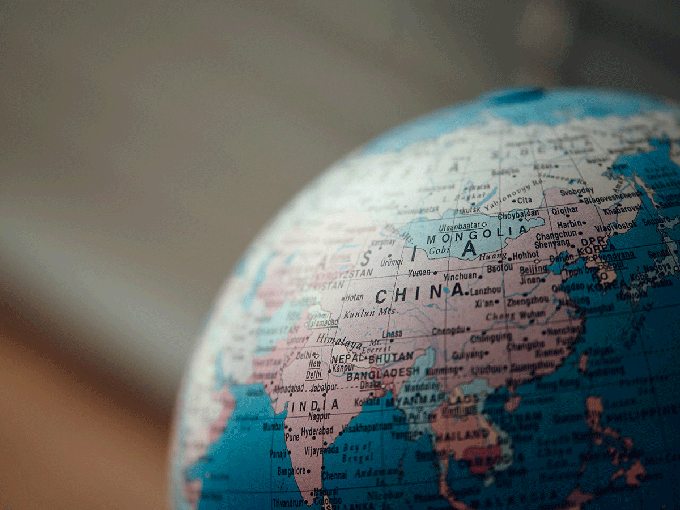Skepticism has long reigned about Chinese universities and the publications of their researchers. But, over the past twenty years, the situation has changed dramatically. The Chinese state has invested in universities, reformed them to make them world leaders. What is the current state of affairs?
Chinese universities are part of a system that may have been inspired by that of the Soviet Union. The aim was to train workers in the context of a socialist economy. If, on the Western side, universities have changed a lot in terms of cooperation with the economic world and professionalization, the changes on the Chinese side took a little longer but then went very quickly in the same direction.
The recent decentralization, accompanied by a delegation of powers to the institutions, has made it possible to open up collaborations between universities and the socio-economic world. Institutions have evolved and some large multidisciplinary universities have emerged on the international scene. Today, there are four main categories of establishments in China:
- standard public universities (nearly 2,000);
- adult training institutions;
- private establishments (nearly 1,000);
- Sino-foreign establishments.
The Chinese Ministry of Education launched in the 90s programs of excellence to transform a hundred universities in order to create an elite with mergers, regroupings and renovations (infrastructures, campuses). These “211” and “985” programs targeted 151 universities. They are now called “Double First Class University Plan” .
These changes have been accompanied by the recruitment of excellent foreign professors and improvements in the training of teacher-researchers. A disciplinary specialization of “first category” universities has been set up and they benefit from more than two-thirds of government research funding.
Current strategies
The reform of Chinese higher education has made it possible to mobilize new financial resources which come from national, provincial or local authorities. Tuition fees are set by communities with rules from the Ministry of Education. There is therefore a great variability, with costs ranging from € 500 to € 5,000.
To summarize, there is a two-speed system with well-funded universities (universities of excellence, active in research) and universities which are satisfied with registration fees and a minimum (universities oriented towards training).
For an equal size, the funding of a university can range from 1 to 100. Large establishments benefit from significant resources through their partnerships with companies (innovation, continuing education) with a sort of “privatization” of certain sectors via the development of ” consulting and expertise activities.
Finally, the strategy is also geared towards increasing student mobility . Exchange agreements and double degree programs have multiplied and the ministry facilitates the arrival of foreign students with different programs and scholarships for incoming mobility.
In 2016, the Ministry lived about 400 000 foreign students in China (Korean: 70 000, 24 000 Americans, Thais: 23,000 … and French at the 11 th place with 10 000). Today, China has about 45 million students according to Unesco (in strong growth) including 800,000 in international mobility, mainly to the United States (36%), Australia (12%), the United Kingdom (11%), Japan (11%).
The main rankings
The qualitative assessment of universities is difficult insofar as there is great heterogeneity and the classification criteria are numerous. To examine China’s position, we looked at several rankings.
The ARWU ranking ( Academic Ranking of World University )
This is the most famous ranking (also called Shanghai Jiao-tong University ranking).
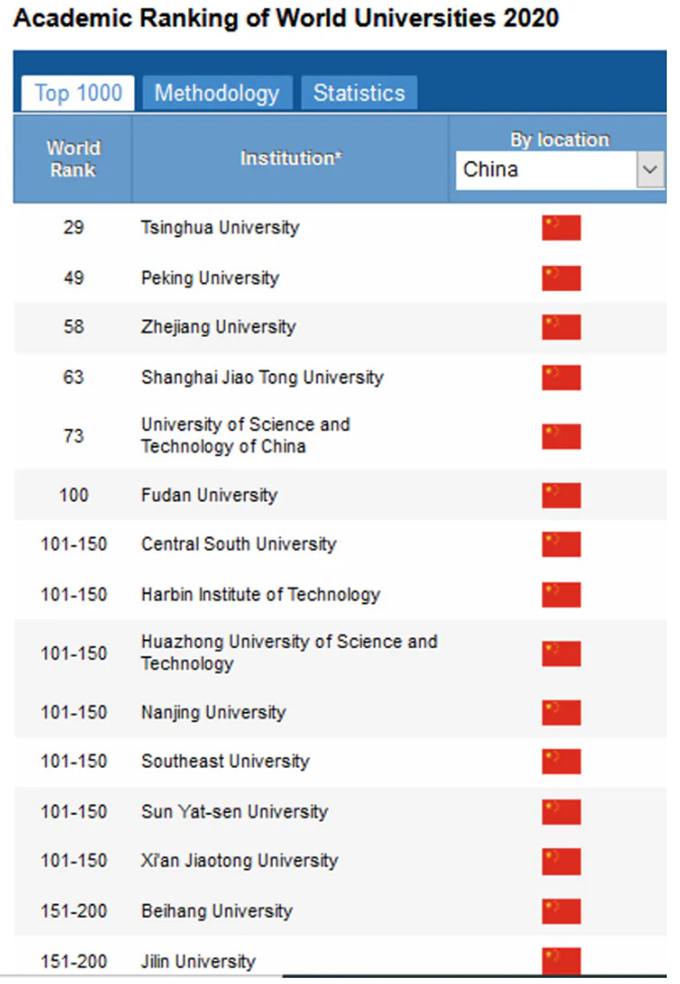
This ranking is focused on scientific excellence (alumni and staff having won the Nobel or Fields medal, citations from researchers, publications in major journals). If we look at the situation in 2005, China had no universities in the Top 100 (compared to 6 now) or in the Top 200 (compared to 13 now). We are therefore seeing a rise in Chinese universities.
The QS ranking ( Quacquarelli Symonds )
This is the second most used classification. It gives the following results for Asia:
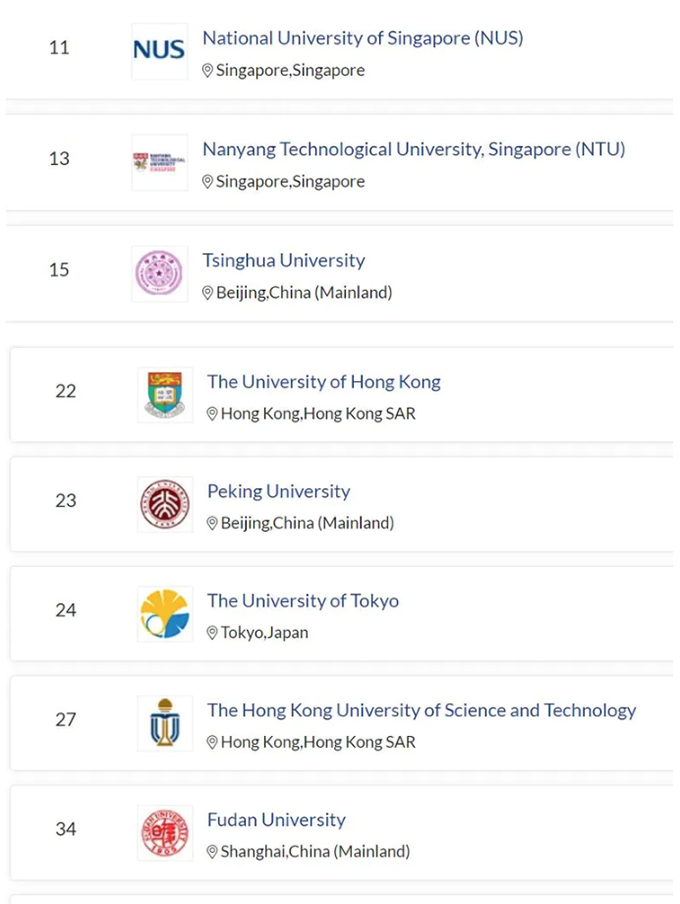
There are 58 Chinese universities, including 10 in the Top 100. The criteria are based on academic reputation, employer satisfaction, citations, ratios of international staff and students …
The ranking of THE ( Times Higher Education )
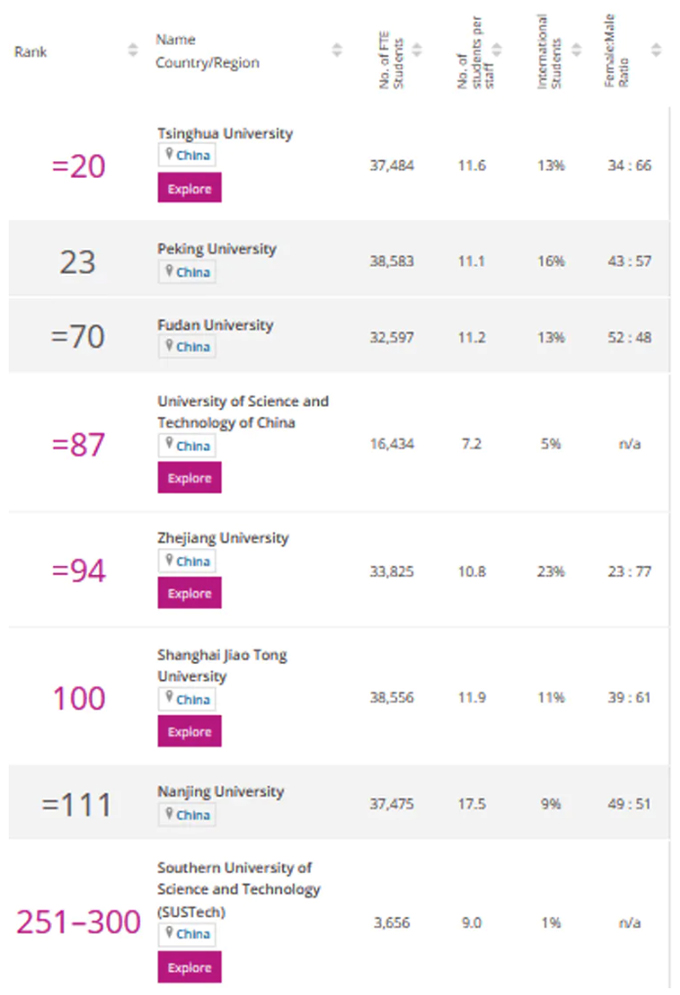
This classification is the third most used and also remains very restrictive with a limited number of establishments. There are 91 Chinese universities including 6 in the Top 100 and 7 in the Top 200. Its criteria also call on reputation (based on surveys), citations, integration, internationalization and links with the world. industrial.
Other rankings
We find the same trend with the ranking of the CWUR ( Center for World University Rankings ) which ranks many more Chinese universities (267):
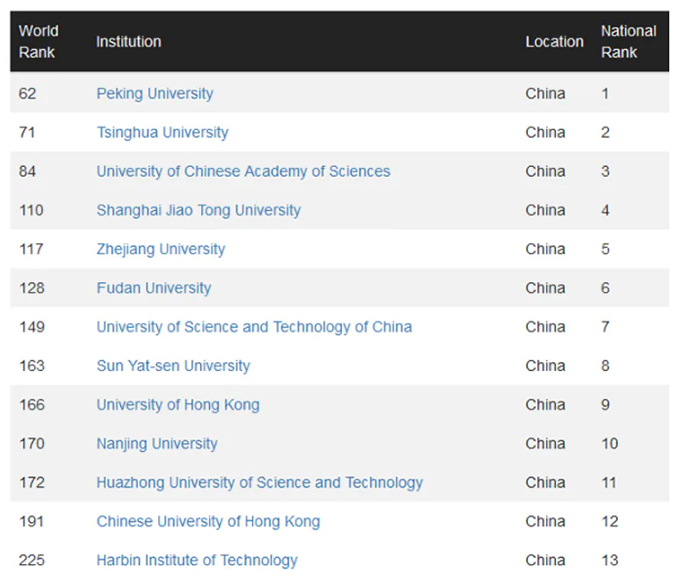
The same goes for the UNIRANK ranking with 941 Chinese establishments:
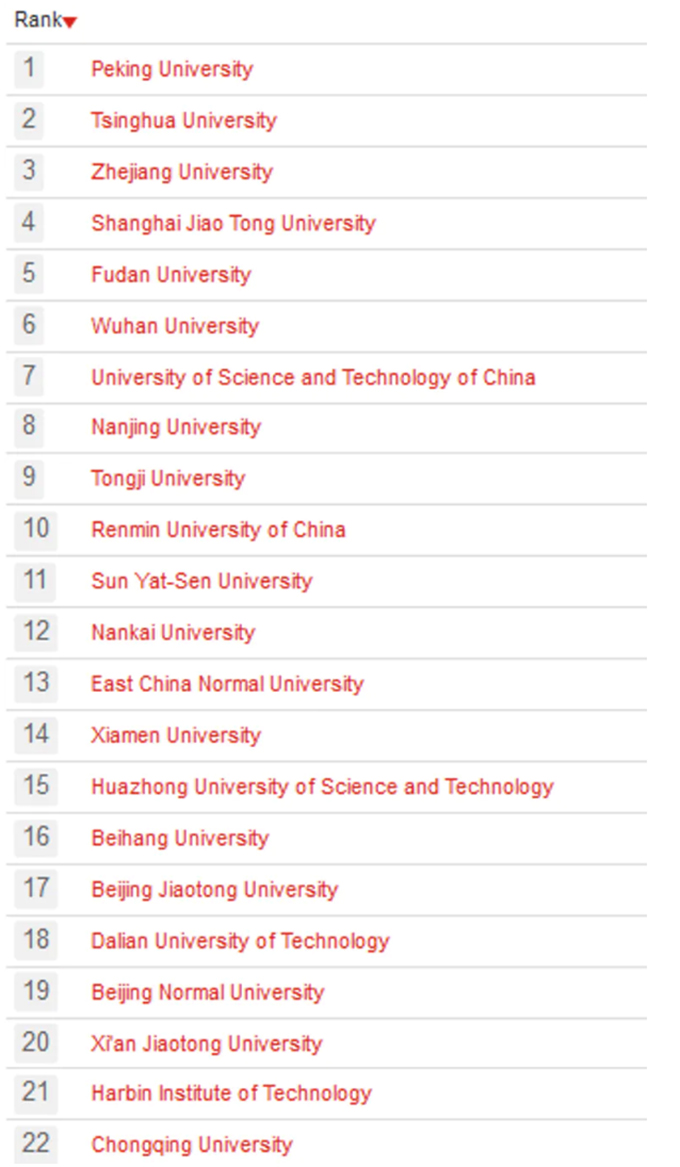
Popularity rankings
New rankings have appeared to assess the popularity of an establishment (Facebook / Like ranking, Twitter, etc.). The ranking based on the impact of the website called “Webometrics” uses criteria such as number of pages, visibility on networks, number of external links, citations. It gives the following results for China:
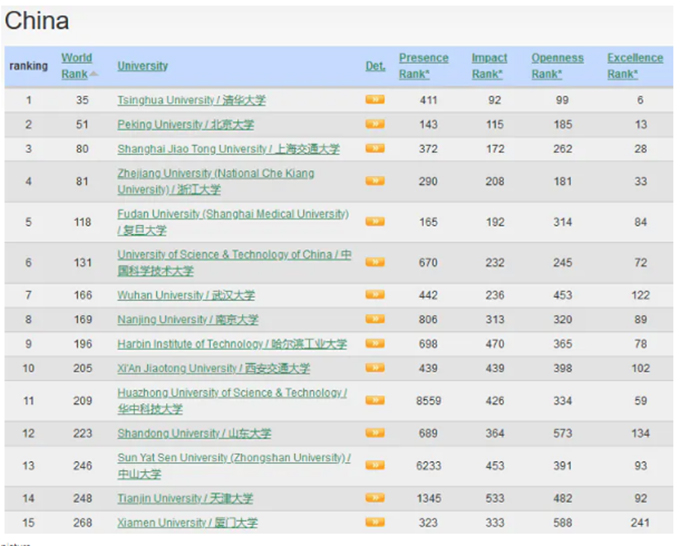
The same goes for the UNIRANK ranking with 941 Chinese establishments:
There are many other rankings, like that of US News & World Report , which ranks 203 Chinese universities (2 in the Top100 and 9 in the Top200).
Thematic rankings
It can also be useful to observe the positioning of Chinese universities in certain disciplines through the disciplinary rankings, such as that of ARWU where there are 55 thematic rankings. Among them, Chinese universities manage to reach the Top 10 for many disciplines, which is quite exceptional.
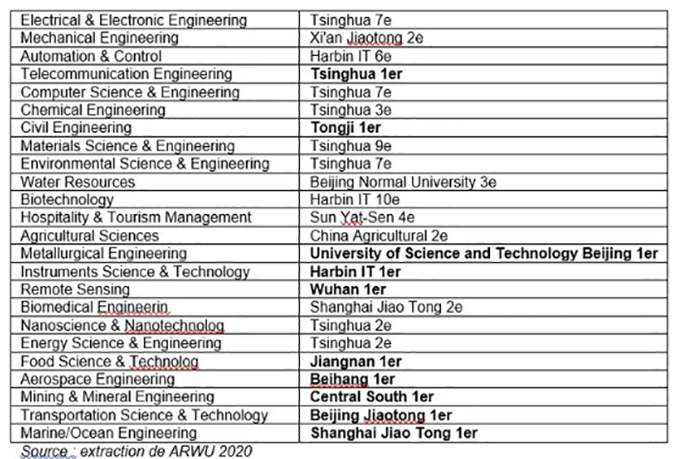
We can note the great diversity of classified establishments: around forty in the Top10. And 8 different universities managed to take first place on the podium, a performance that only the United States managed to achieve. This shows that the “specialization” strategy has borne fruit. The areas where Chinese universities are well ranked are in strategic sectors: engineering sciences (materials, electronics, chemistry, etc.) and agriculture.
Scientific publications
The number of Chinese publications is increasing very rapidly. The number referenced in SCOPUS is a good indicator. It went from 171,401 in 2005 to 750,134 in 2020. The fields covered overlap with international rankings, with engineering sciences in the lead (source extract Scopus 2021):

Some Chinese institutions have a very high h index (which measures the success of publications by citations). For example, according to Google Scholar: Liu Justina has an h = 127 and 95,000 citations, Mingshui Chen has an h = 161 and 182,000 citations.
Overall, there are also country rankings based on publications, citations and indexes, such as the Scimago Journal & Country Rank :
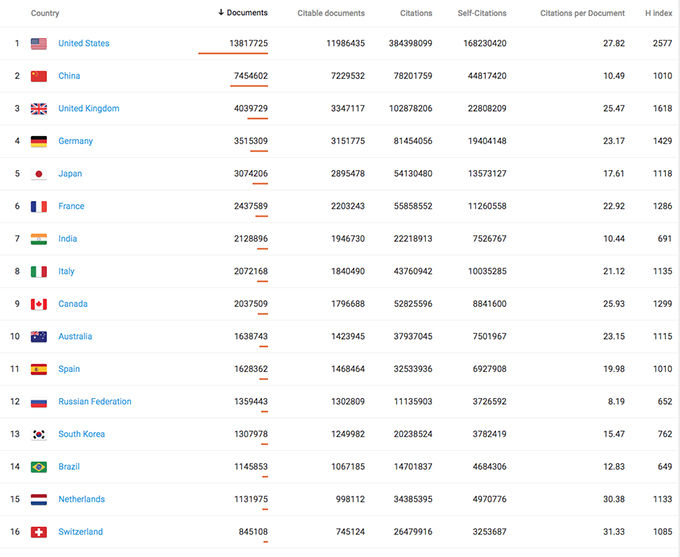
We observe that China is ranked 2 nd (France is 6 th ) for the number of publications, but at the level of the h index, France has 1180 against 884 for China.
Chinese universities have come a long way, especially because of the initial weakness of international exchanges, funding and the language barrier. But with the strong support of the state and the adoption of ambitious strategies, the results are there: Chinese universities are gaining places in the rankings, their quality is no longer questioned, and their internationalization is underway, all like their cooperation with the industrial world.
Author Bio: Research Engineer at La Rochelle University

